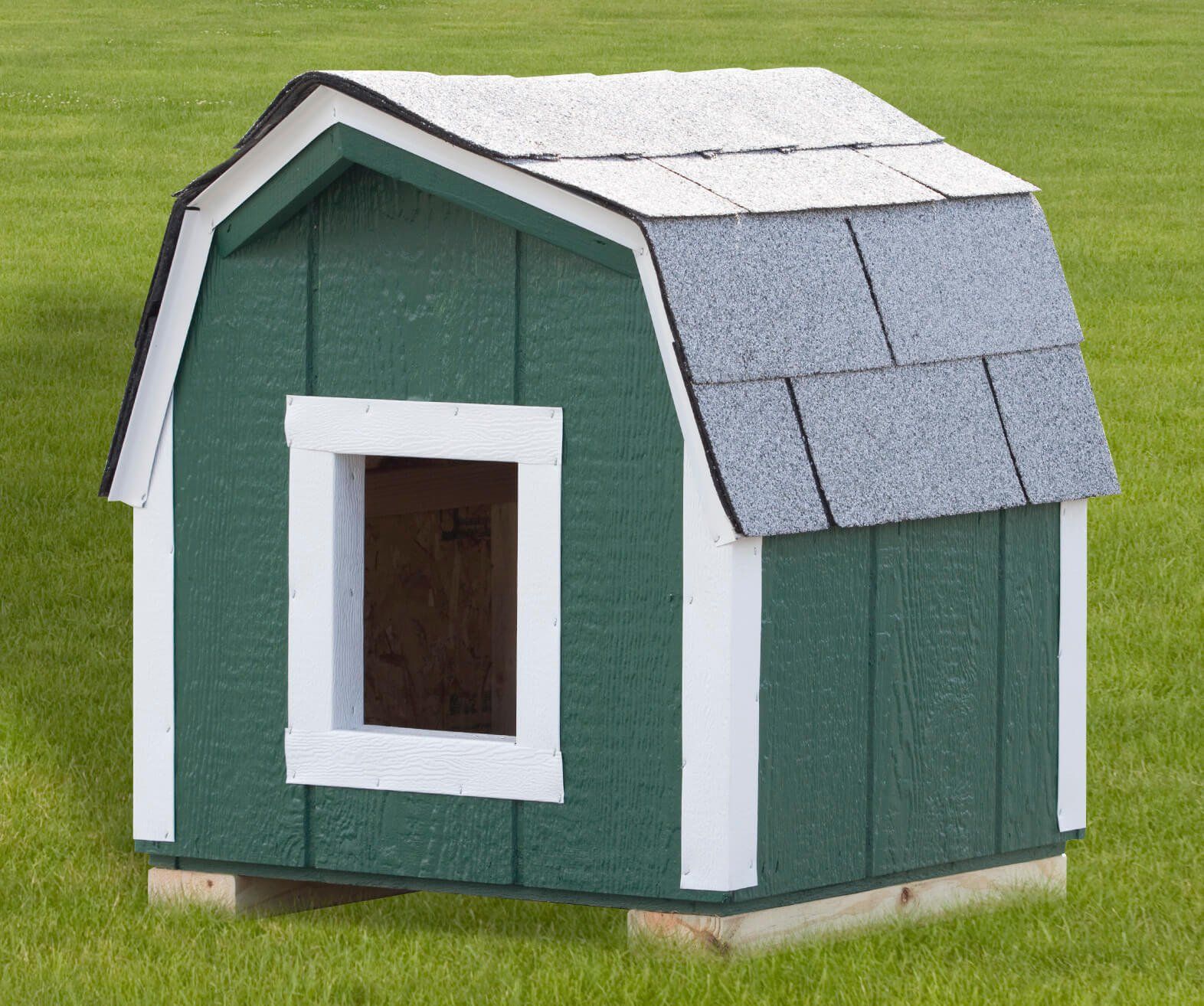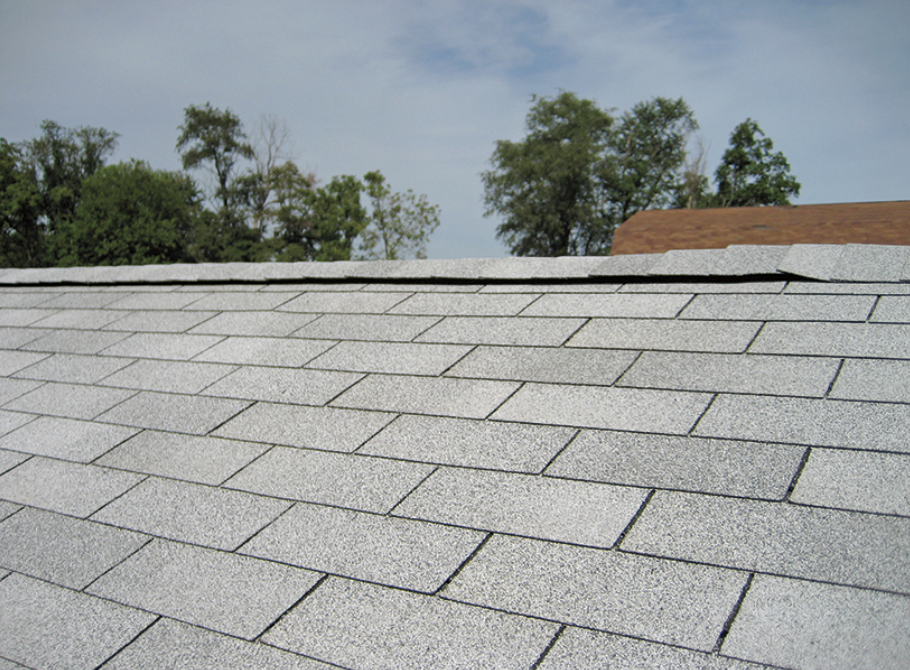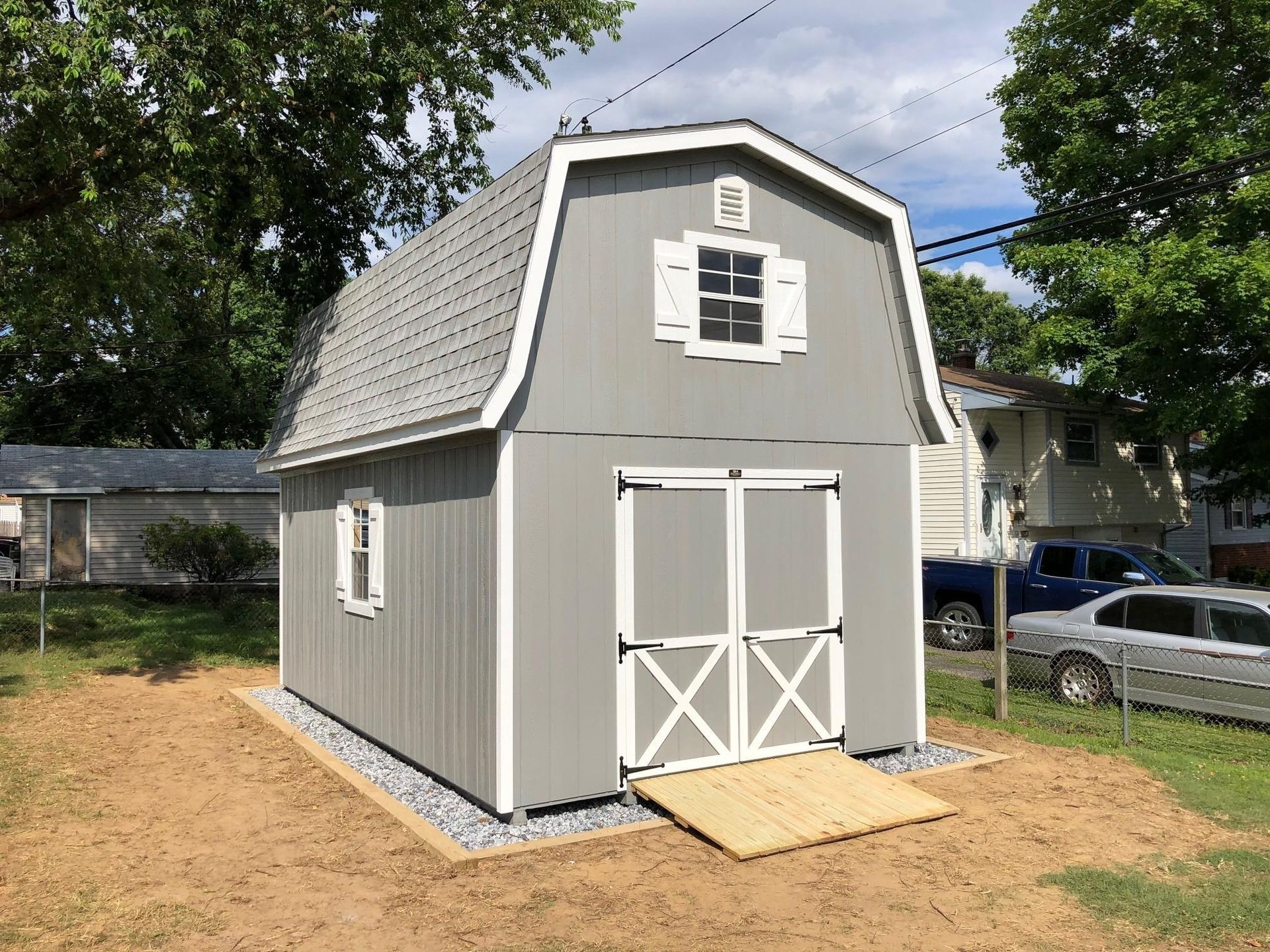A well-built, weatherproof structure will greatly improve your animal’s well-being. Jed’s Sheds builds our shelters with weatherproofing in mind, making the structure withstand high winds and heavy snowfalls. For extra weatherproofing, you can plant some shrubs and trees around the shelter to take the bulk hit of the cold winds, making the structure itself less cold. If you have a dog house, you can move it so it is not facing the wind, so there is less of a draft entering the shelter.
How to Keep Animal Shelters Warm for the Winter
In New Jersey, we’ve seen a lot of snowstorms and extreme temperatures come our way. It is important to remember that during these cold temperatures, your animals will need to keep warm too. When using a dog house, horse barn, pet enclosure, or run-in shed for your animals, you will need to make sure they are warm enough for them to live in. If your animals can come inside your home, it is best to keep them inside during the night or in the coldest temperatures. If your animals cannot come inside your home, here are some tips on how to keep animal shelters warm for the winter seasons.
Proper Insulation
Properly insulating your animal shelter will regulate its inside temperature. Adding foam boards around the walls and floor of the structure will add extra insulation, protecting your animals from the frigid outside temperatures. You can even add mylar blankets around the shelter, as they are made with aluminium to reflect heat and keep whoever wears them warm. When building your structure, Jed’s Sheds can customize the insulation method used in your animal shelters to fit your and your pet's needs. We can ensure there is proper insulation inside your shelters to keep your animals warm in the winter.
Using Straw as Insulation
For animal shelters specifically, straw is a good insulator. Sometimes people use hay for insulation, but it does not absorb moisture like straw does, making straw a better option. Straw helps retain the animal’s body heat, so you can use it to create a warm insulated bed for them to sleep on. Make sure you regularly check the straw they are sleeping on to ensure it is not damp, as damp bedding can cause discomfort.
Weatherproofing
Maintain Their Wellbeing
Always Have Access to Veterinary Care
Check on your animals daily to ensure they are eating well, are active, and show no signs of frostbite or hypothermia. It is very important to ensure you have quick access to a veterinarian in case of an emergency. If your animal falls ill or isn’t eating enough, bring them to the vet. Winter is also a good time to do an annual check-up at the vet, they can determine if they are healthy enough to withstand the cold.
Ensure They Have Enough Food and Water
During the winter, animals will need more food intake to retain their energy levels. They use their food intake to regulate their body temperature, so increasing their calorie intake will help their bodies generate more heat. Additionally, frequently check their water bowls as they are likely to freeze in the cold. Always ensure that there is fresh water for them to drink to keep them hydrated.
Proper Ventilation
Keeping Horse Barns Warm in the Winter
Since horse barns are a larger structure, they may need more heat than insulation and ventilation can provide. Horses are naturally accustomed to cold temperatures due to their thick winter coats that keep them warm. However, if temperatures reach extreme cold, you may need additional heaters. You can use blankets designed for horses to warm them up or use portable radiant heaters or heat lamps to add additional heat to the barn. Be careful with this though, as the straw and hay that’s in the barn can pose a fire hazard if they are too close to high heat or sparks. You also don’t want to accidentally cause your horses to overheat, which can damage their health.
Jed’s Sheds builds structures with cold temperatures in mind. We use high-quality materials that will withstand winter weather and insulate your structure to ensure it does not get too cold. If you’re looking to buy a
custom-built animal shelter, we provide many options that will fit your and your animal's needs. Our durable shelters will stand tall against extreme temperatures, providing a great space for your animals to live in year-round. Check out our
available structures or
begin designing a custom shelter with us today. If you have any questions, feel free to contact us at (609)390-8450.





